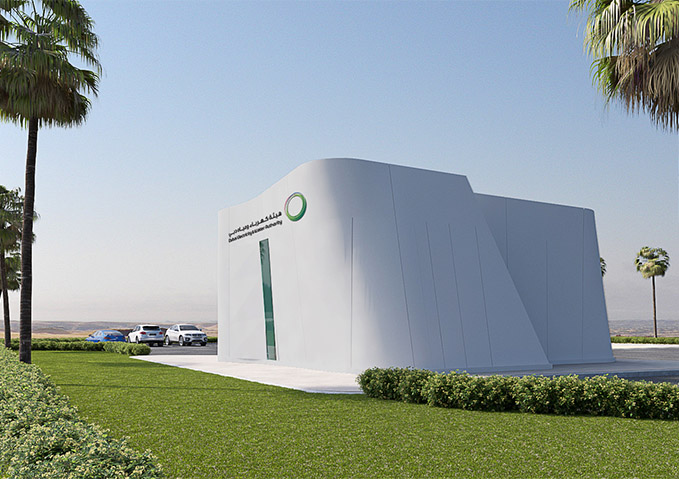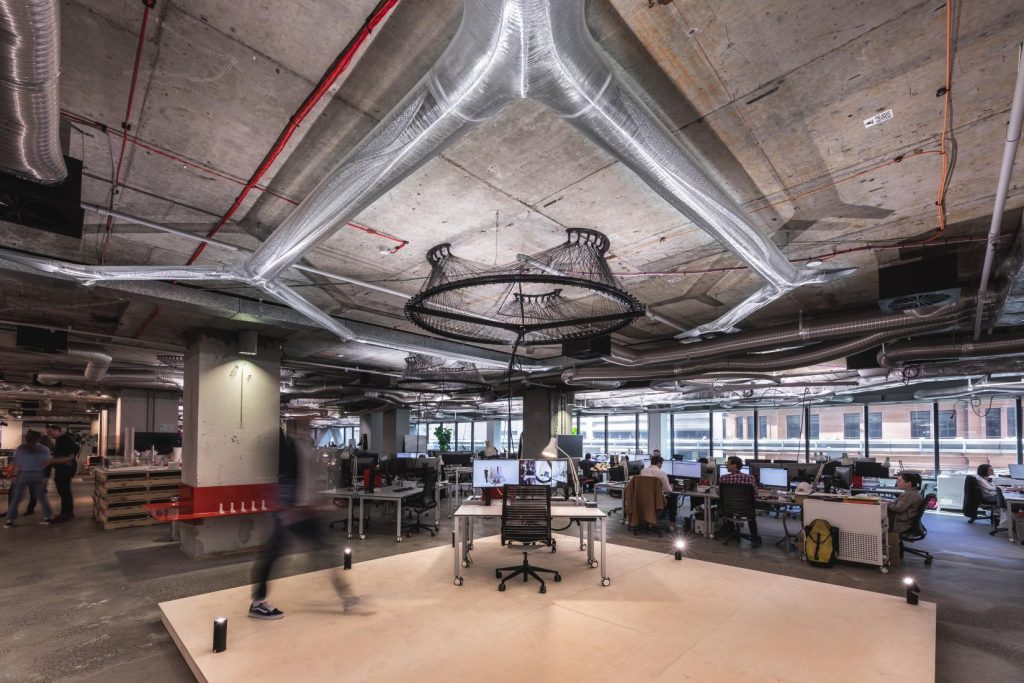Leading 3D printer manufacturer EOS has agreed to help develop a residential air conditioning (AC) system that’s up to ten times more efficient than standard.
Working with UAE-based aerospace firm Strata Manufacturing and AI engineering platform developer Hyperganic, EOS is said to be aiming to create a system that’s ‘highly coveted in global markets.’ As such, the UAE’s Minister of Industry and Advanced Technology, Dr. Sultan Ahmed Al Jaber, claims the resulting unit will show how his nation can cater to both domestic and international demand.
“The partnership between Hyperganic, EOS and Strata demonstrates how the UAE’s manufacturing sector can develop and launch homegrown products that are globally competitive,” claimed Al Jaber. “The development of competitive, marketable products will empower the growth of the UAE’s industrial sector and deliver a positive impact on the national economy.”
The project’s participants sign their partnership agreement. Photo via Zawya.
The UAE’s big 3D printing push
EOS’ air conditioning initiative is only the latest in a string of 3D printing projects to have taken place in the UAE, which has become something of a regional hub for the technology in recent years. This has particularly been the case in the country’s construction sector, and its Prime Minister Mohammed bin Rashid Al Maktoum has even gone so far as to issue a 3D printing decree, regulating how it’s used there.
Over the last five years, the UAE has become home to a portfolio of increasingly ambitious additive manufactured infrastructure. Since Immensa Labs established the UAE’s first 3D printing facility in 2017, WASP has used the technology to 3D print a beachside Dior outlet in the country, and CyBe has been contracted to 3D print homes there as well.
On a state level, the Dubai Electricity and Water Authority (DEWA) has also unveiled the world’s first 3D printed research lab at the emirate’s 77 km² Solar Park. Set up as a base for the R&D of rovers and drones, as well as spare part 3D printing, the facility could be a potential driver of cost and lead time savings across DEWA’s operations.
“In line with the directives of our leadership to support and develop the national industrial sector, the Ministry of Industry and Advanced Technology aims to develop a national industrial ecosystem,” added Al Jaber. “This exciting new technology is an ideal example of innovation driving sustainable development and creating a positive economic impact.”

Developing more sustainable AC
Citing International Energy Agency figures, Hyperganic, EOS and Strata say that energy demand from air conditioners is expected to triple by 2050. With this development set to see the equivalent of 10 new devices being turned on every second for 28 years, and AC units already accounting for 10% of global energy usage, the project team are urging change to avoid environmental repercussions.
To initiate the required change, the three firms have now signed up to a partnership at a formal ceremony, through which they’ve committed to developing a new, more eco-friendly air conditioning unit of their own. In practice, the project will see Hyperganic’s algorithmic engineering approach combined with EOS’ metal 3D printing technology, to develop a novel, energy-efficient air-cooling alternative.
Hyperganic has also announced plans to open a new UAE Engineering Office in early-July 2022, where a team of engineers, set to be 20-strong by the end of next year, will cooperate with Strata and EOS’ teams to help bring the system to fruition.
Though the companies haven’t outlined how their AC unit will make the proposed efficiency gains, or what role 3D printing will play in achieving these, they plan to provide an update at COP28, hosted in Dubai in 2023. According to EOS’ Founder Dr . Hans Langer, the project will require the “deep integration of engineering and manufacturing,” but it could “significantly advance state-of-the-art technology.”

Targeting thermal self-regulation
During the last year, 3D printing has been used to develop a range of approaches to revamping the building construction process, that take on the challenges of heat regulation head on. Researchers at the Australian UTS School of Architecture have worked with a team at BVN Architecture to robotically-3D print an air conditioning unit from recycled plastic, in a way that reduces its carbon content by 90%.
At Texas A&M University, meanwhile, engineers have taken a different approach to solving the issue, by developing a novel phase-change 3D printing material. The resin can be DIW 3D printed into structures which change shape to absorb thermal energy, potentially making them ideal for building heat-retentive infrastructure.
Elsewhere, researchers at the Egypt-based British University and Cosign Group have also come up with a new material, although one loaded with biomatter as well as plastic. It’s thought that the algae-loaded 3D printing filament could soon be used to create circular alternatives to conventional glass surfaces, which its creators dub ‘living architecture.’
To stay up to date with the latest 3D printing news, don’t forget to subscribe to the 3D Printing Industry newsletter or follow us on Twitter or liking our page on Facebook.
For a deeper dive into additive manufacturing, you can now subscribe to our Youtube channel, featuring discussion, debriefs, and shots of 3D printing in action.
Are you looking for a job in the additive manufacturing industry? Visit 3D Printing Jobs for a selection of roles in the industry.
Featured image shows the project’s participants signing their partnership agreement. Photo via Zawya.



Comments are closed.